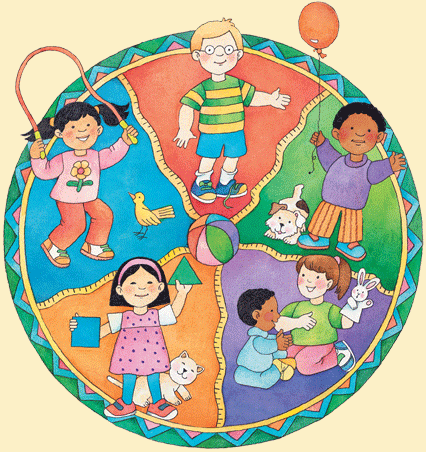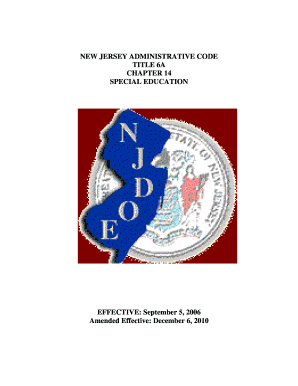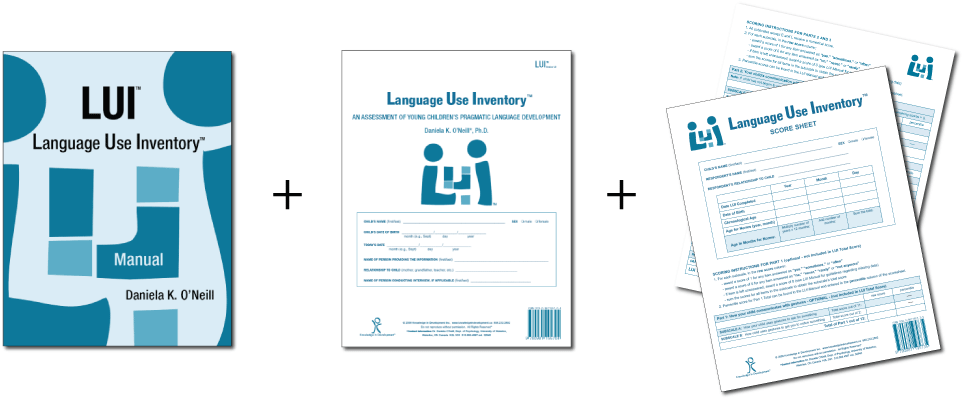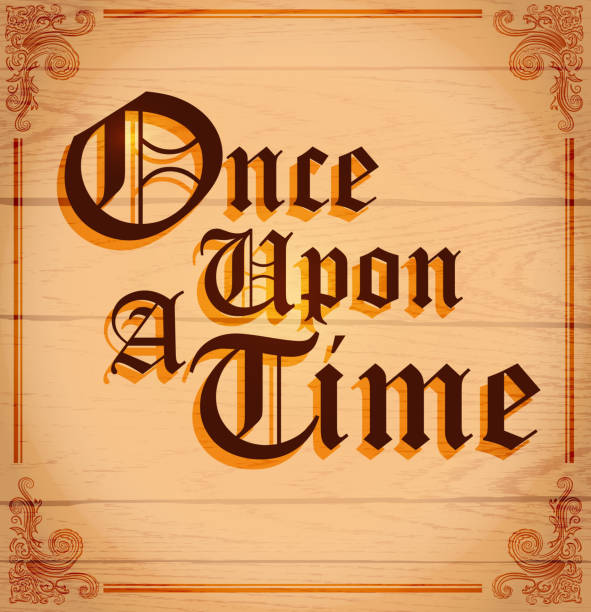 “Well, the school did their evaluations and he doesn’t qualify for services” tells me a parent of a 3.5 year old, newly admitted private practice client. “I just don’t get it” she says bemusedly, “It is so obvious to anyone who spends even 10 minutes with him that his language is nowhere near other kids his age!” “How can this happen?” she asks frustratedly?
“Well, the school did their evaluations and he doesn’t qualify for services” tells me a parent of a 3.5 year old, newly admitted private practice client. “I just don’t get it” she says bemusedly, “It is so obvious to anyone who spends even 10 minutes with him that his language is nowhere near other kids his age!” “How can this happen?” she asks frustratedly?
This parent is not alone in her sentiment. In my private practice I frequently see preschool children with speech language impairments who for all intents and purposes should have qualified for preschool- based speech language services but do not due to questionable testing practices.
To illustrate, several years ago in my private practice, I started seeing a young preschool girl, 3.2 years of age. Just prior to turning 3, she underwent a collaborative school-based social, psychological, educational, and speech language evaluation. The 4 combined evaluators from each field only used one standardized assessment instrument “The Battelle Developmental Inventory – Second Edition (BDI-2)” along with a limited ‘structured observation’, without performing any functional or dynamic assessments and found the child to be ineligible for services on account of a low average total score on the BDI-2.
However, during the first session working 1:1 with this client at the age of 3.2 a number of things became very apparent. The child had very limited highly echolalic verbal output primarily composed of one-word utterances and select two-word phrases. She had highly limited receptive vocabulary and could not consistently point to basic pictures denoting common household objects and items (e.g., chair, socks, clock, sun, etc.) Similarly, expressively she exhibited a number of inconsistencies when labeling simple nouns (e.g., called tree a flower, monkey a dog, and sofa a chair, etc.) Clearly this child’s abilities were nowhere near age level, so how could she possibly not qualify for preschool based services?
 Further work with the child over the next several years yielded slow, labored, and inconsistent gains in the areas of listening, speaking, and social communication. I’ve also had a number of concerns regarding her intellectual abilities that I had shared with the parents. Finally, two years after preschool eligibility services were denied to this child, she underwent a second round of re-evaluations with the school district at the age of 5.2.
Further work with the child over the next several years yielded slow, labored, and inconsistent gains in the areas of listening, speaking, and social communication. I’ve also had a number of concerns regarding her intellectual abilities that I had shared with the parents. Finally, two years after preschool eligibility services were denied to this child, she underwent a second round of re-evaluations with the school district at the age of 5.2.
This time around she qualified with bells on! The same speech language pathologist and psychologist who assessed her first time around two years ago, now readily documented significant communication (Preschool Language Scale-5-PLS-5 scores in the 1st % of functioning) and cognitive deficits (Full Scale Intelligence Quotient-FSIQ in low 50’s).
Here is the problem though. This is not a child who had suddenly regressed in her abilities. This is a child who actually had improved her abilities in all language domains due to private language therapy services. Her deficits very clearly existed at the time of her first school-based assessment and had continued to persist over time. For the duration of two years this child could have significantly benefited from free and appropriate education in school setting, which was denied to her due to highly limited preschool assessment practices.
Today, I am writing this post to shed light on this issue, which I’m pretty certain is not just confined to the state of New Jersey. I am writing this post not simply to complain but to inform parents and educators alike on what actually constitutes an appropriate preschool speech-language assessment.
 As per NJAC 6A:14-2.5 Protection in evaluation procedures (pgs. 29-30)
As per NJAC 6A:14-2.5 Protection in evaluation procedures (pgs. 29-30)
(a) In conducting an evaluation, each district board of education shall:
- Use a variety of assessment tools and strategies to gather relevant functional and developmental information, including information:
- Provided by the parent that may assist in determining whether a child is a student with a disability and in determining the content of the student’s IEP; and
- Related to enabling the student to be involved in and progress in the general education curriculum or, for preschool children with disabilities, to participate in appropriate activities;
- Not use any single procedure as the sole criterion for determining whether a student is a student with a disability or determining an appropriate educational program for the student; and
- Use technically sound instruments that may assess the relative contribution of cognitive and behavioral factors, in addition to physical or developmental factors.
Furthermore, according to the New Special Education Code: N.J.A.C. 6A:14-3.5(c)10 (please refer to your state’s eligibility criteria to find similar guidelines) the eligibility of a “preschool child with a disability” applies to any student between 3-5 years of age with an identified disabling condition adversely affecting learning/development (e.g., genetic syndrome), a 33% delay in one developmental area, or a 25% percent delay in two or more developmental areas below :
- Physical, including gross/fine motor and sensory (vision and hearing)
- Intellectual
- Communication
- Social/emotional
- Adaptive
 These delays can be receptive (listening) or expressive (speaking) and need not be based on a total test score but rather on all testing findings with a minimum of at least two assessments being performed. A determination of adverse impact in academic and non-academic areas (e.g., social functioning) needs to take place in order for special education and related services be provided. Additionally, a delay in articulation can serve as a basis for consideration of eligibility as well.
These delays can be receptive (listening) or expressive (speaking) and need not be based on a total test score but rather on all testing findings with a minimum of at least two assessments being performed. A determination of adverse impact in academic and non-academic areas (e.g., social functioning) needs to take place in order for special education and related services be provided. Additionally, a delay in articulation can serve as a basis for consideration of eligibility as well.
Moreover, according to the State Education Agencies Communication Disabilities Council (SEACDC) Consulatent for NJ – Fran Liebner, the BDI-2 is not the only test which can be used to determine eligibility, since the nature and scope of the evaluation must be determined based on parent, teacher and IEP team feedback.
In fact, New Jersey’s Special Education Code, N.J.A.C. 6A:14 prescribes no specific test in its eligibility requirements. While it is true that for NJ districts participating in Indicator 7 (Preschool Outcomes) BDI-2 is a required collection tool it does NOT preclude the team from deciding what other diagnostic tools are needed to assess all areas of suspected disability to determine eligibility.
Speech pathologists have many tests available to them when assessing young preschool children 2 to 6 years of age.
SELECT SPEECH PATHOLOGY TESTS FOR PRESCHOOL CHILDREN (2-6 years of age)
Articulation:
- Sunny Articulation Test (SAPT)** Ages: All (nonstandardized)
- Clinical Assessment of Articulation and Phonology-2 (CAAP-2) Ages: 2.6+
- Linguisystems Articulation Test (LAT) Ages: 3+
- Goldman Fristoe Test of Articulation-3 (GFTA-3) Ages: 2+
Fluency:
- Stuttering Severity Instrument -4 (SSI-4) Ages: 2+
- Test of Childhood Stuttering (TOCS) Ages 4+
 General Language:
General Language:
- Preschool Language Assessment Instrument-2 (PLAI-2) Ages: 3+
- Clinical Evaluation of Language Fundamentals -Preschool 2 (CELF-P2) Ages: 3+
- Test of Early Language Development, Third Edition (TELD-3) Ages: 2+
- Test of Auditory Comprehension of Language Third Edition (TACL-4) Ages: 3+
- Preschool Language Scale-5 (PLS-5)* (use with extreme caution) Ages: Birth-7:11
Vocabulary
- Receptive One-Word Picture Vocabulary Test-4 (ROWPVT-4) Ages 2+
- Expressive One-Word Picture Vocabulary Test-4 (EOWPVT-4) Ages 2+
- Montgomery Assessment of Vocabulary Acquisition (MAVA) 3+
- Test of Word Finding-3 (TWF-3) Ages 4.6+
Auditory Processing and Phonological Awareness
- Auditory Skills Assessment (ASA) Ages 3:6+
- Test of Auditory Processing Skills-3 (TAPS-3) Ages 4+
- Comprehensive Test of Phonological Processing-2 (CTOPP-2) Ages 4+
 Pragmatics/Social Communication
Pragmatics/Social Communication
- Language Use Inventory LUI (O’Neil, 2009) Ages 18-47 months
- Children’s Communication Checklist-2 (CCC-2) (Bishop, 2006) Ages 4+
In addition to administering standardized testing SLPs should also use play scales (e.g., Westby Play Scale, 1980) to assess the given child’s play abilities. This is especially important given that “play—both functional and symbolic has been associated with language and social communication ability.” (Toth, et al, 2006, pg. 3)
 Finally, by showing children simple wordless picture books, SLPs can also obtain of wealth of information regarding the child’s utterance length, as well as narrative abilities ( a narrative assessment can be performed on a verbal child as young as two years of age).
Finally, by showing children simple wordless picture books, SLPs can also obtain of wealth of information regarding the child’s utterance length, as well as narrative abilities ( a narrative assessment can be performed on a verbal child as young as two years of age).
Comprehensive school-based speech-language assessments should be the norm and not an exception when determining preschoolers eligibility for speech language services and special education classification.
Consequently, let us ensure that our students receive fair and adequate assessments to have access to the best classroom placements, appropriate accommodations and modifications as well as targeted and relevant therapeutic services. Anything less will lead to the denial of Free Appropriate Public Education (FAPE) to which all students are entitled to!
Helpful Smart Speech Therapy Resources Pertaining to Preschoolers:
 In recent months, I have been focusing more and more on speaking engagements as well as the development of products with an explicit focus on assessment and intervention of literacy in speech-language pathology. Today I’d like to introduce 4 of my recently developed products pertinent to assessment and treatment of literacy in speech-language pathology.
In recent months, I have been focusing more and more on speaking engagements as well as the development of products with an explicit focus on assessment and intervention of literacy in speech-language pathology. Today I’d like to introduce 4 of my recently developed products pertinent to assessment and treatment of literacy in speech-language pathology. First up is the Comprehensive Assessment and Treatment of Literacy Disorders in Speech-Language Pathology
First up is the Comprehensive Assessment and Treatment of Literacy Disorders in Speech-Language Pathology Next up is a product entitled From Wordless Picture Books to Reading Instruction: Effective Strategies for SLPs Working with Intellectually Impaired Students. This product discusses how to address the development of critical thinking skills through a variety of picture books utilizing the framework outlined in Bloom’s Taxonomy: Cognitive Domain which encompasses the categories of knowledge, comprehension, application, analysis, synthesis, and evaluation in children with intellectual impairments. It shares a number of similarities with the above product as it also reviews components of effective reading instruction for children with language and intellectual disabilities as well as provides recommendations on how to integrate reading instruction effectively into speech-language therapy sessions.
Next up is a product entitled From Wordless Picture Books to Reading Instruction: Effective Strategies for SLPs Working with Intellectually Impaired Students. This product discusses how to address the development of critical thinking skills through a variety of picture books utilizing the framework outlined in Bloom’s Taxonomy: Cognitive Domain which encompasses the categories of knowledge, comprehension, application, analysis, synthesis, and evaluation in children with intellectual impairments. It shares a number of similarities with the above product as it also reviews components of effective reading instruction for children with language and intellectual disabilities as well as provides recommendations on how to integrate reading instruction effectively into speech-language therapy sessions. The product Improving Critical Thinking Skills via Picture Books in Children with Language Disorders is also available for sale on its own with a focus on only teaching critical thinking skills via the use of picture books.
The product Improving Critical Thinking Skills via Picture Books in Children with Language Disorders is also available for sale on its own with a focus on only teaching critical thinking skills via the use of picture books. Finally, my last product Best Practices in Bilingual Literacy Assessments and Interventions focuses on how bilingual speech-language pathologists (SLPs) can effectively assess and intervene with simultaneously bilingual and multicultural children (with stronger academic English language skills) diagnosed with linguistically-based literacy impairments. Topics include components of effective literacy assessments for simultaneously bilingual children (with stronger English abilities), best instructional literacy practices, translanguaging support strategies, critical questions relevant to the provision of effective interventions, as well as use of accommodations, modifications and compensatory strategies for improvement of bilingual students’ performance in social and academic settings.
Finally, my last product Best Practices in Bilingual Literacy Assessments and Interventions focuses on how bilingual speech-language pathologists (SLPs) can effectively assess and intervene with simultaneously bilingual and multicultural children (with stronger academic English language skills) diagnosed with linguistically-based literacy impairments. Topics include components of effective literacy assessments for simultaneously bilingual children (with stronger English abilities), best instructional literacy practices, translanguaging support strategies, critical questions relevant to the provision of effective interventions, as well as use of accommodations, modifications and compensatory strategies for improvement of bilingual students’ performance in social and academic settings. I’ve always loved fairy tales! Much like Audrey Hepburn “If I’m honest I have to tell you I still read fairy-tales and I like them best of all.” Not to compare myself with Einstein (sadly in any way, sigh) but “When I examine myself and my methods of thought, I come to the conclusion that the gift of fantasy has meant more to me than any talent for abstract, positive thinking.”
I’ve always loved fairy tales! Much like Audrey Hepburn “If I’m honest I have to tell you I still read fairy-tales and I like them best of all.” Not to compare myself with Einstein (sadly in any way, sigh) but “When I examine myself and my methods of thought, I come to the conclusion that the gift of fantasy has meant more to me than any talent for abstract, positive thinking.” In the past, I have written about why
In the past, I have written about why  Today I’m excited to introduce a new product: “
Today I’m excited to introduce a new product: “ As SLPs we routinely administer a variety of testing batteries in order to assess our students’ speech-language abilities. Grammar, syntax, vocabulary, and sentence formulation get frequent and thorough attention. But how about narrative production? Does it get its fair share of attention when the clinicians are looking to determine the extent of the child’s language deficits? I was so curious about what the clinicians across the country were doing that in 2013, I created a survey and posted a link to it in several SLP-related FB groups. I wanted to find out how many SLPs were performing narrative assessments, in which settings, and with which populations. From those who were performing these assessments, I wanted to know what type of assessments were they using and how they were recording and documenting their findings. Since the purpose of this survey was non-research based (I wasn’t planning on submitting a research manuscript with my findings), I only analyzed the first 100 responses (the rest were very similar in nature) which came my way, in order to get the general flavor of current trends among clinicians, when it came to narrative assessments. Here’s a brief overview of my [limited] findings.
As SLPs we routinely administer a variety of testing batteries in order to assess our students’ speech-language abilities. Grammar, syntax, vocabulary, and sentence formulation get frequent and thorough attention. But how about narrative production? Does it get its fair share of attention when the clinicians are looking to determine the extent of the child’s language deficits? I was so curious about what the clinicians across the country were doing that in 2013, I created a survey and posted a link to it in several SLP-related FB groups. I wanted to find out how many SLPs were performing narrative assessments, in which settings, and with which populations. From those who were performing these assessments, I wanted to know what type of assessments were they using and how they were recording and documenting their findings. Since the purpose of this survey was non-research based (I wasn’t planning on submitting a research manuscript with my findings), I only analyzed the first 100 responses (the rest were very similar in nature) which came my way, in order to get the general flavor of current trends among clinicians, when it came to narrative assessments. Here’s a brief overview of my [limited] findings. 
 “Well, the school did their evaluations and he doesn’t qualify for services” tells me a parent of a 3.5 year old, newly admitted private practice client. “I just don’t get it” she says bemusedly, “It is so obvious to anyone who spends even 10 minutes with him that his language is nowhere near other kids his age!” “How can this happen?” she asks frustratedly?
“Well, the school did their evaluations and he doesn’t qualify for services” tells me a parent of a 3.5 year old, newly admitted private practice client. “I just don’t get it” she says bemusedly, “It is so obvious to anyone who spends even 10 minutes with him that his language is nowhere near other kids his age!” “How can this happen?” she asks frustratedly?


 As per NJAC 6A:14-2.5
As per NJAC 6A:14-2.5  These delays can be receptive (listening) or expressive (speaking) and need not be based on a total test score but rather on all testing findings with a minimum of at least two assessments being performed. A determination of adverse impact in academic and non-academic areas (e.g., social functioning) needs to take place in order for special education and related services be provided. Additionally, a delay in articulation can serve as a basis for consideration of eligibility as well.
These delays can be receptive (listening) or expressive (speaking) and need not be based on a total test score but rather on all testing findings with a minimum of at least two assessments being performed. A determination of adverse impact in academic and non-academic areas (e.g., social functioning) needs to take place in order for special education and related services be provided. Additionally, a delay in articulation can serve as a basis for consideration of eligibility as well. General Language:
General Language:  Pragmatics/Social Communication
Pragmatics/Social Communication Finally, by showing children simple
Finally, by showing children simple 
 In the past, I have written several posts on the topic of word finding difficulties (
In the past, I have written several posts on the topic of word finding difficulties (